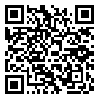BibTeX | RIS | EndNote | Medlars | ProCite | Reference Manager | RefWorks
Send citation to:
URL: http://jpcp.uswr.ac.ir/article-1-124-fa.html
Objective: Social anxiety disorder (SAD) is defined as a constant fear of being embarrassed or negatively evaluated in social situations or while doing activities in the presence of others. Several studies have examined the role of certain variables that might predict response to treatment and may affect treatment outcome. The purpose of this study was to identify predictive variables of change and improvement.
Methods: The English version of the SPIN (Connor et al., 2000) was translated into Farsi and used in this study. In addition to SPIN, the measures including Clinical Interviews with the DSM-IV (Spitzer, Williams and Gibbons, 1994) and Depression, Anxiety and Stress Scale-21 (DASS-21) (Lovibond et al., 1995), the Credibility/Expectancy scale (Davilly & Borkovec, 2000) and Homework Compliance scale (Primakoff, Epstein, & Covi, 1986) were administered to a sample of 59 participants with SAD ranging from 18 to 40 years of age.
Results: Among the variables studied with the neural network model, logical sense in the Credibility/Expectancy scale (CEQ), depression in DASS, fear and avoidance in SPIN, and the compliance with homework (HCS) were significant in prediction of recovery rate.
Conclusion: The artificial neural network is capable in predicting SAD patients' respond to cognitive-behavioral therapy.
دریافت: 1392/4/11 | پذیرش: 1392/6/12 | انتشار: 1392/7/9
| بازنشر اطلاعات | |
 |
این مقاله تحت شرایط Creative Commons Attribution-NonCommercial 4.0 International License قابل بازنشر است. |

